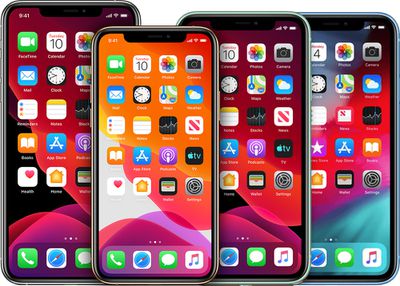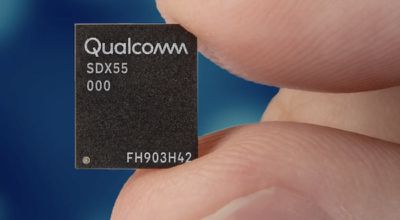Apple is designing the antenna module that will be used in its 5G iPhones in-house because it was unhappy with the version that Qualcomm designed, reports Fast Company, citing a source with knowledge of Apple's plans.
Apple reportedly "balked" at the design of the QTM 525 5G millimeter-wave antenna module offered by Qualcomm because it "doesn't fit into the sleek industrial design Apple wants for the new phone."

Qualcomm will still provide the 5G modem chip used in the new iPhones, but the antenna module will be developed by Apple.
Apple is, however, working on another design that uses both the Qualcomm modem and the Qualcomm antenna as a backup, so Apple does have the option to swap over to a version of the iPhone that uses both Qualcomm components, but if forced to do so, Apple will need to release a slightly thicker iPhone.
As Fast Company points out, Apple has run into problems with antennas designed in-house before. The iPhone 4, for example, had an antenna design that resulted in dropped calls and other problems when the iPhone was held in a way that covered the antennas. Fast Company's source says that another recent Apple antenna design "required twice as much power as comparable antennas to produce the same amount of radio signal."
Creating 5G antennas for mmWave networks is harder than creating other kinds of antennas because they send and receive higher frequency signals, leaving less room for error. 5G performance is also reliant on the antenna design.
The 2020 iPhones equipped with 5G will use a "phased array" antenna with two parts that work together to form a beam of radio signal, as described by Fast Company, which could lead to issues if the antenna and modem module are made by different companies.
The beam can be electronically steered in different directions without the antenna moving. The modem chip and the antenna module work closely together to make this work properly, our source said. Having the two parts made by different companies may introduce some uncertainty and bump up the difficulty level of the overall design.
Apple reportedly wants to use its own antennas both because of design reasons and because Apple wants as few Qualcomm parts in the iPhone as possible. Fast Company's source suggests that Apple continues to feel it is "getting screwed on royalties" by Qualcomm.
Rumors have suggested that Apple is working on developing its own modem chips for use in future iPhones, but that technology is not ready yet, and until it is, Apple is reliant on Qualcomm's 5G modem chips. Apple purchased Intel's modem chip business after Intel exited the mobile modem chip development market, which could speed up Apple's work on developing its own chip technology.

Apple is expected to release multiple 5G capable iPhones in 2020 that are equipped with Qualcomm's X55 5G modem chip that offers 7Gb/s peak download speeds and 3Gb/s upload speeds. For more on what to expect in the 2020 iPhones, make sure to check out our roundup.























